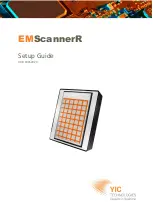
81
The modern keratometers in use today are very similar to those used over a century ago and similar
inherent limitations apply. The accuracy of the keratometer is conditional on the uniformity of the
central corneal curvature over the area measured. The formula used by the keratometer assumes
that the cornea has a spherical or cylindrical surface with a single radius of curvature in each
meridian and a major and minor axis that are orthogonal. Additionally, keratometry provides no
information about areas central or peripheral to the points measured; it is based only on four
localized data points within the central 3mm of the cornea. In most normal eyes the curvature over
the visual axis is fairly uniform, and this simple measurement is sufficiently descriptive. This explains
why most surgeons still utilize keratometry data for their standard IOL computation formulas.
The need to evaluate more of the corneal surface by reflection (keratoscopy) was first described
in the 1820’s by Cuignet, and the first keratoscope was presented by Goode in 1847. While
keratometry was able to measure only a small portion of the cornea, keratoscopy was able to
provide a qualitative picture of approximately 50% of the cornea. Antonio Placido, however, who
is often credited with this technique, was the first to photograph these corneal reflections. Placido
used a series of illuminated concentric black and white rings as a target in the 1880’s. This device
was unique because it had a viewing tube in the center that was used for alignment. Collimating
keratoscopes, which used the Placido disk in a more “cone shaped” fashion, were used in an attempt
to increase corneal coverage. Physical limitations (nose and brow) and optical limitations (inability
to reflect light from the peripheral cornea back to the central camera) still limit the scope of these
devices to approximately 60% corneal coverage.
While keratoscopy provided qualitative information, it was the union of rapid computer analysis
and digital video image processing by Klyce in 1984 that transformed the gross examination of the
cornea into a refined quantitative measurement. The first color coded map of corneal curvature was
published in 1987 and led to multiple commercially available computerized videokeratoscopes. These
are capable of digitizing information from a collimating keratoscope
(Figure 98)
to produce detailed
color-coded maps depicting corneal curvature.
12 Belin/Ambrósio Enhanced Ectasia Display
Figure 97: Keratometer
















































